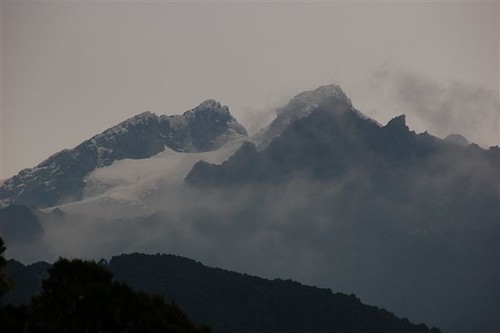In the Mountains of the Moon, A Trek to Africa’s Last Glaciers
Posted by Big Gav in africa, glaciers, global warming, ruwenzori
Yale Environment 360 has a look at Africa's disappearing glaciers - In the Mountains of the Moon, A Trek to Africa’s Last Glaciers.
I am hiking through a moss-draped forest more than 10,000 feet above sea level in the Rwenzori Mountains in western Uganda, not far from the border of the Democratic Republic of the Congo. The trail ahead is steep as a ladder and slippery with mud, and every few minutes my guide and I stop to rest.
Most people who come to this part of Africa do so for its wildlife, especially the endangered mountain gorilla. I have made the journey for another reason. I am looking for a glacier.
In the popular imagination, glaciers and Africa intersect at one location: Mt. Kilimanjaro, the iconic dormant volcano that rises from the grasslands of Tanzania and whose shrinking snowcap has become a symbol of climate change.
But there are glaciers in steamy Uganda, too, hidden in the eaves of jagged 16,000-foot peaks that are lost in the clouds most of the year. And these glaciers have a climate change story to tell, too — one that scientific research suggests better reflects the impact of global warming than the fading snows of Kilimanjaro.
But their story is also nearing its close. In just two decades, scientists expect the Rwenzori glaciers — as well as Africa’s few other remaining ice fields — to be gone. Kilimanjaro has already lost 84 percent of its ice since 1912, and what’s left is not expected to last more than a couple of decades. The Lewis glacier on Mount Kenya is also expected to wink out soon.
That prognosis comes as no surprise to my guide, a local Bakonjo tribesman named Baluku Josephat, who has guided climbers through the Rwenzori range since 1982 and has seen the consequences of global warming firsthand.
“If you go to Mount Baker,” he says, referring to a massive, ship-like peak in the center of the range where glaciers have already melted, “you can now go without crampons. It was not that way in the past. Now people just walk over rocks.”






